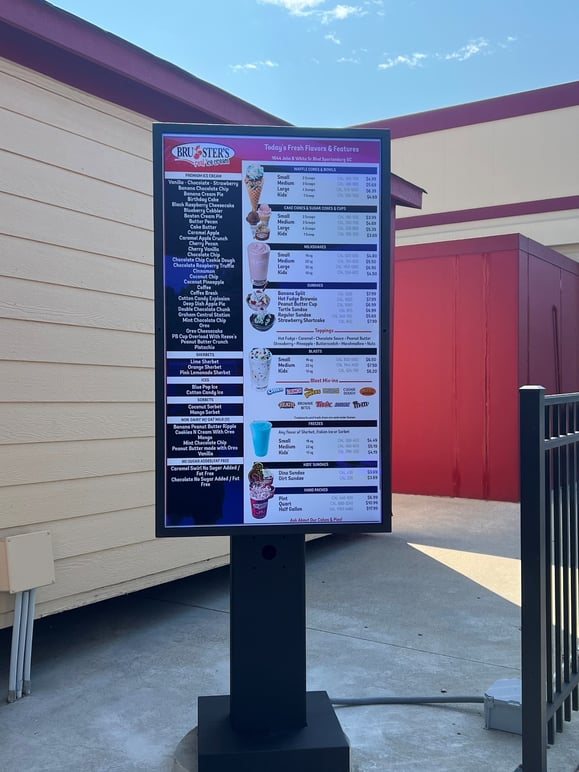Drive-Through 2.0: Why integration is the root of success
Steve Jobs once said, “Design isn’t just what it looks like and feels like – design is how it works.” In signature fashion, Jobs perfectly summarized a profound truth that has relevance and application across many industries and disciplines.
In the QSR world, how it works - particularly how it works in the context of technology at the drive-through - ultimately boils down to one notion: platform integration.
The drive-thru experience continues to be a quintessential part of the American dining experience. Americans have long loved convenience and fast service, but the COVID-19 lockdowns upped that desire to an unprecedented degree, forcing QSRs to find and implement solutions that allow them to compete with concierge services and maintain customer loyalty. While these evolving expectations can feel like a never-ending sprint for QSRs, the key thing that differentiates lasting innovation (and long-term financial returns) comes down to the quality and integration of different elements at play.
So, how does platform integration work? A look at modern drive-thru and the role of digital signage
Operators today are tasked with meeting consumers on both a physical and digital level, while maintaining a high degree of branding cohesion and quality of service across their platforms. Integrations provide the necessary framework to achieve this, from both a hardware and a software perspective.
On the hardware side, recent and ongoing advancements in technology have dramatically reshaped what’s on offer in drive-thru solutions, particularly in terms of integrations that enhance the customer experience. Hardware innovations have led to the development of smaller, more aesthetically pleasing, durable, cost-effective, and low-maintenance equipment. The integration of sophisticated operating systems directly into screens, favoring Software on a Chip (SOC) over external media players, streamlines operations by reducing friction, the risk of failure, and maintenance requirements. Other key hardware integrations include:
- Robust Wi-Fi and mobile connectivity: A drive-thru experience will only be as connective and efficient as its Wi-Fi. Enhancing drive-thru lanes with stronger Wi-Fi signals or dedicated mobile connectivity options enables better integration with mobile ordering apps. Customers can place their orders ahead of time and have them ready for pickup upon arrival, minimizing wait times and improving order accuracy. This integration also supports mobile payment options, making the transaction process smoother and more convenient for the customer.
- Touchscreen ordering kiosks: The deployment of outdoor touch screen ordering kiosks as an extension of the drive-thru lane adds an element of control and customization for the customer. These kiosks can offer detailed menu information, including nutritional content, and allow for easy customization of orders. Their use can reduce order errors, increase upselling opportunities, and improve order processing speed, leading to shorter wait times and a more satisfying customer experience.

On the software side, the focus on integration is enormous, as its ability to offer unparalleled personalization is evolving rapidly. Examples of best-in-class software integrations include:
- Digital menu boards with contextual awareness: Modern digital menu boards can adjust content in real-time based on various factors such as time of day, weather, or even specific customer preferences. For instance, on a hot day, the menu might highlight cold beverages or ice cream, while breakfast items might be promoted in the morning hours. This level of contextual awareness enhances customer experience by presenting the most relevant options at the right time.
- CRM and loyalty program integration: By integrating CRM systems and loyalty programs with drive-thru operations, QSRs can offer a highly personalized experience to returning customers. For example, when a loyalty program member visits, the system can recognize their vehicle or mobile order and suggest their usual order, offer a personalized deal based on past purchases, or apply loyalty points to their order without the customer having to navigate through the app.
- Integrated payment solutions: Integrating payment systems with order-taking interfaces allows for a seamless transaction experience. Customers can pay with their preferred method without the need for physical interaction, whether through mobile payments, contactless credit cards, or even biometric payment methods. This integration can also remember payment preferences for returning customers, further personalizing the experience.
Developing technology like LetzChat will allow users to select their preferred language at the drive-thru or filter menu options based on dietary needs and preferences, a feature that, while currently available through apps, is poised to make its debut directly on drive-thru screens through advanced recognition technology.
Furthermore, data feed and Point of Sale (POS) integration play a pivotal role in refining the drive-thru experience. Seamless integration with various POS systems enables automated data feeds into a restaurant’s digital signage network, enriching content and ensuring real-time menu updates. The best integration solutions tailor their functionalities to the specific needs of a restaurant, automating content updates and offering a truly customized experience.
What QSRs should look for in an integrations partner - and a word of encouragement
Finding the right integration partner is crucial for maintaining a consistent and seamless transaction experience across various platforms. Operators must seek out partners who not only grasp the concept of holistic and native integration but also possess the expertise to implement it effectively. This means going beyond the mere purchase and installation of hardware; it involves ensuring that devices, data, and systems—from software and Customer Management Systems (CMS) to loyalty programs, back-office operations, and kitchen management—integrate smoothly.
The challenge lies in identifying integration partners who can comprehend the intricate details of consolidating these components. Such partners must act as both the central point of contact and the "design engineer," adept at orchestrating the integration of back-end systems in a centralized manner. This capability has become essential as customers increasingly value the seamless functionality of interconnected systems, highlighting the significance of integration in enhancing operational efficiency and customer satisfaction in the QSR sector.
Keep in mind, starting small is perfectly acceptable—there's no requirement to launch a large-scale, intricately integrated operation from the get-go. Diving into the process with a willingness to learn and adapt is the most important thing, recognizing that initial attempts, even on a small scale, provide insights that light the way for refinement and future success. QSRs who commit to this path are positioning themselves for a future where digital integration and signage enhance the customer experience and operational efficiency. Let this be the moment you decide to step forward, leveraging technology to its fullest potential in your QSR.
Share this
You May Also Like
These Related Stories

How Smart Signage Platforms Solve the Menu Management Headache

Tech Matters: NRF Big Show and the outtakes for Retail and Foodservice Innovation


